Lords of the Fallen — Review
Since the valiant lords faced the horrors of the magnificent demonic god Adyra, nine brutal winters have passed, filled with soulslike titles. However, after his infamous defeat, there was no glory or an everlasting stream of video essays, the promised success of brilliant Dark Souls, but only disgrace and mockery that drove the Deck 13 authors into the dark sci-fi corners of the souls genre (where they fared noticeably better with The Surge series). CI Games, however, were not willing to give up the publishing power over the franchise with a strong potential scent, and therefore, for the first time, unveiled the new Lords of the Fallen at Gamescom 2022. The curious decision to choose a name identical to the hated seemingly hinted clone suggested that the new team in charge of development – Hexworks, threw themselves into the project with so much enthusiasm that this reboot would truly become a worthy bearer of the iconic name. Did we end up with a full-fledged spiritual successor, or just another disappointment?
Honestly, even after more than fifty hours lost in the fantastically depressive world of Mournstead, I don't really know exactly what to think about this action RPG that mimics many good soulslike games. The brand new Lords of the Fallen (LOTF) is truly a visually polished, damp dream of every artistically inclined player, and if you happen to be a fan of Dark Souls or Elden Ring-like games, you will feel at home here. Well, almost at home... Because the lords of the fallen are really trying to capture the essence of these beloved games, but surprisingly, for the majority of the community, in a controversially irritating way, where every well-known or potentially entertaining concept is strangely twisted. After playing, there remains a taste of a confused genre identity mixed with a truly unmistakable dose of development sins, which, compared to brilliant competition, are unequivocally unforgivable!
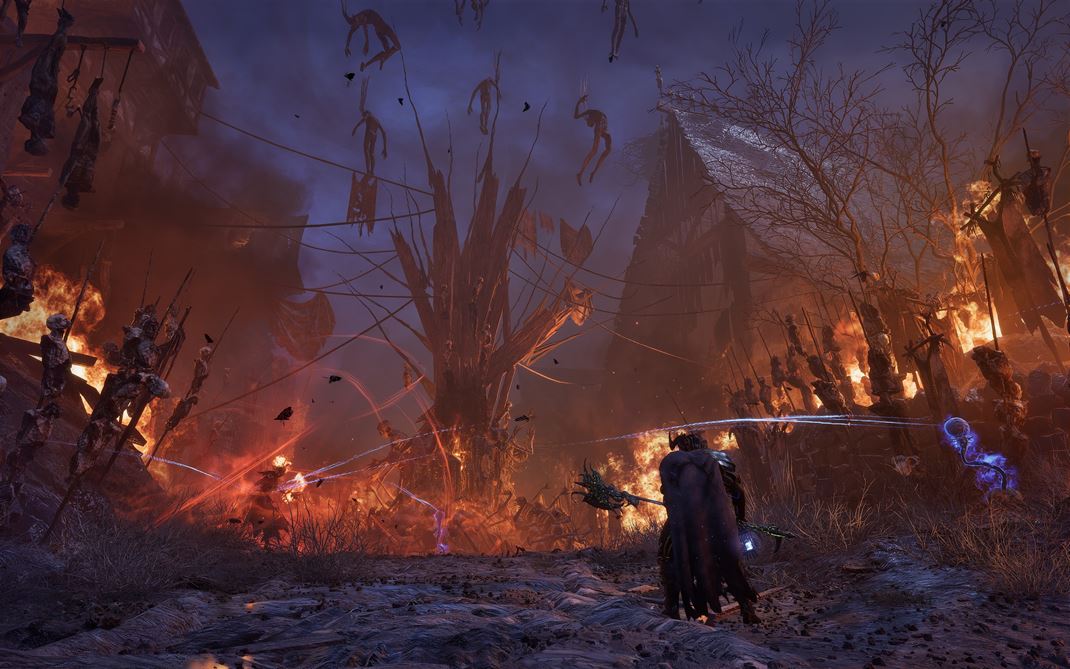
I. Pride – When evolution takes a step back...
Latin superbia, or otherwise the sin noticeable in several fundamental elements of what the new LOTF is trying to be. The brand's reboot proudly boasts not only the label of a dark fantasy RPG slasher but, more importantly, it crowns itself as a true soulslike. Over the past months, this term has been mentioned countless times in the gaming scene, and such genre saturation may not always be the best sign. And even though I believe many of you are already tired of constantly describing the components of this successful formula, I would like to apply the words of the famous Peter B. Parker and say, "Let’s do this one last time!"
Soulslike games are similar to the title Dark Souls from 2011, and among the iconic similarities are extremely challenging gameplay, unique bosses, checkpoint stations resetting enemies in a given location, stamina consumed by attacks and blocking, parry mechanics, cryptically presented story (readable mainly from item descriptions), evasion - dodge, in-game currency lost with death, and, of course, jumping into breakable crates, barrels, and so on. The original LOTF from 2014 contained all these aspects in some capacity and naturally builds on them in the sequel, which, however, performs noticeably better in each of them. Since the release in 2011, not only have the genre's founders, From Software, evolved significantly, but the genre itself has also undergone substantial development. However, the authors from Hexworks, with their proud nature, refuse to accept this evolution and, on the contrary, their genre evolution seems to be heading backward...
Why should stamina only be spent in battles, as seen in Elden Ring, when it can be spent during extensive runs through stretched locations? Why should Vestiges, the equivalents of bonfire checkpoints, be regularly and logically distributed throughout levels, eliminating long runs to bosses when they can do the exact opposite? Why should battles be balanced and adhere to soulslike standards that, for some reason, work when they can intentionally frustrate players and encourage quitting the game at the first setback? And this is how one could continue with these senselessly proud decisions of the developers, standing behind their vision, for a very long time... Even beyond the launch of the product, as they refuse to touch their unreliable lock-on system in frequent updates, expressing their satisfaction with it in official patch notes.
II. Greed – Identity denied by "authenticity"
In Latin, avaritia, this sin organically builds upon the previous one and can be observed mainly in the developers' reluctance to show more of their own identity. In another world, LOTF could have been a relatively dark hack and slash action game, which, with faster-paced combat and not necessarily a significant overhaul of mechanics, could have provided something that, I believe, hasn't been seen before. The game has an abundance of atmospheric worlds, two to be exact, and I've often pondered the horror potential of this universe as a spin-off. Perhaps that's why, from the announcement, the main marketing draw was the ability to traverse between two worlds using the magical Umbral lamp. A layman's view confirms that the marketing did not deceive, and the concept itself works surprisingly reliably, allowing you to travel between the two worlds almost instantly, thanks to the power of the Unreal Engine 5.
The mentioned lamp, aside from delightfully bouncing on the protagonist's belt, brings with it several interesting mechanics, such as traveling to the realm of the dead, placing Vestige seeds, draining souls from enemies, or solving environmental puzzles. To add to this, the more time you spend in the Umbral, the more noticeable your presence becomes to the local monsters (effectively communicated by the blinking UI element of the eye located in the upper right corner). Gradually, not only larger and more challenging monsters come to greet you, but their number also rapidly increases. Here, horror elements could be effectively incorporated in combination with the excellent lighting, but the authors prefer to aim for the player's frustration with hordes of enemies and insta-kills from absurdly challenging foes, supposedly scaring you away from spending time in the visually immersive Umbral. Unfortunately, you end up unnecessarily discouraged from more detailed exploration in favor of the "difficulty."
However, in the end, even the beautifully designed lamp is not a reward. While traversing dark locations, you might expect that this metal beauty, constantly burning with an aggressive blue flame, would provide improved visibility. However, when pulled out, it creates only a kind of environment that further darkens the window into the world of the dead, and the camera also locks unreasonably. With the view fixed only forward, combined with very slow turning, the protagonist also starts to step extremely cautiously, making the game, where something aggressive can attack the player at any time, feel more archaic and frustrating than a sensible addition to the soulslike genre. It's evident that the developers are depriving themselves of the opportunity to showcase their own interesting ideas, which, due to their low number, unfortunately, simply get lost in the crowd…
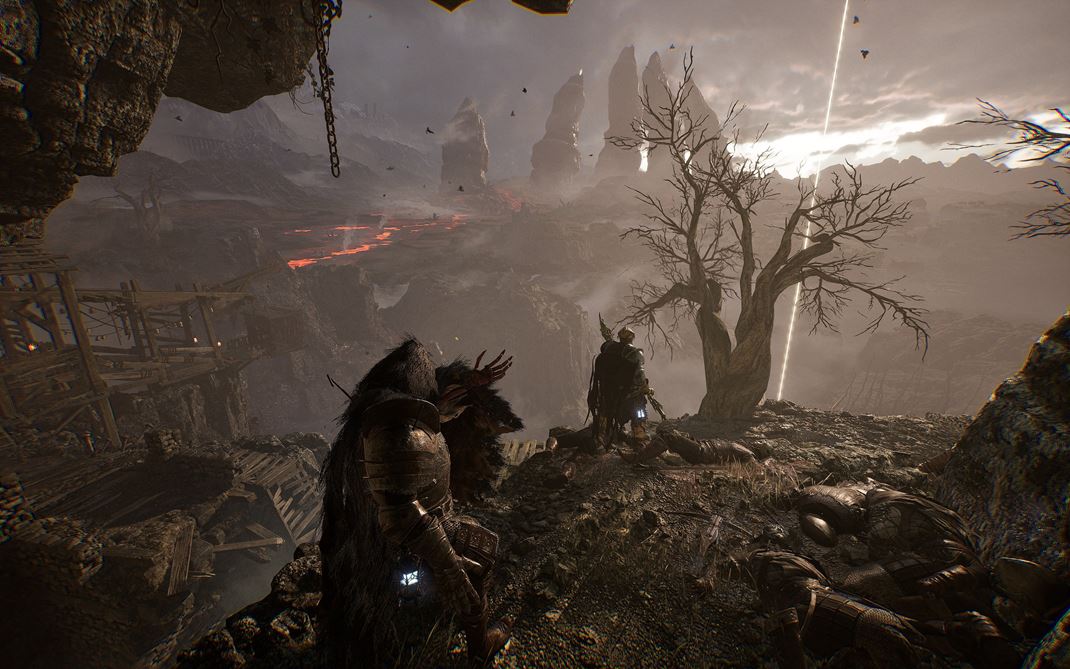
III. Envy – Of Geniuses and Thieves
Pablo Picasso once said that good artists copy, and great artists steal. So, I assume he would know enough about the sin named invidia in Latin (not to be confused with NVIDIA graphics). However, a critical analysis of the work of the Hexworks authors reveals that you can steal like a thief wherever you want, but it doesn't necessarily make you a genius or even a good artist. After playing the first few minutes of LOTF, your muscle and sensory memory from 2016 slowly awakens, desperately trying to discern which Dark Souls 3 clone you're actually playing. Although it all feels somewhat wooden and unresponsively stiff with many delays, in the end, it works quite well, which probably proves the timelessness of From Software's approach to their games.
However, the least inspiration is felt in the extensive story of the game, which, despite its iconically designed scenes and a plethora of cryptic elements intertwined throughout the presentation, tells a story about a unique world related to the original title. The plot is traditionally closely tied to the design of this mysteriously veiled world, and the authors excel particularly in environmental storytelling. The dark, war-torn Mournstead was liberated throughout the age by the so-called Judges from the tyrannical grip of the demonic god Adyra. However, gods are never gone forever, and just as the claws of this fallen god began to rise pompously on the horizon, his servants began to regain strength. The brave clan of Hallowed Sentinels bound Adyra's darkness with five signal beacons and suppressed his attempts to regain power until its members fell to the last.
Adyra's forces gradually seized the power of the five magical beacons, and the golden light of the Sentinels was replaced by a menacing red glow. The last brave heart was also seized by fear, and in panic, he threw his lamp deep into the catacombs, where it found the lifeless body of our protagonist and brought him back to the realm of the living. After a trip to the elaborate and feature-rich character editor, I took control of the powerful curves of my legendary Brunhilda and fought through an exciting tutorial that bombards the player with an overwhelming amount of information... After completing it, I shook my weapon with the tutorial boss, met the first NPC characters, and reached the first real boss fight, which hid the entrance to the HUB. In Skyrest Bridge, I learned that as the new owner of the lamp, I now fall under the so-called Dark Crusaders, who came as valiant crusaders to the land of Mournstead to restore peace, and the goal of liberating the five beacons is finally clear!
However, where does the mentioned envy come into play? You can probably observe it mainly in the attempt to mimic the interconnectedness of the world. From Software is undoubtedly an icon of modern looped game design, providing players with surprising shortcuts and layers of individual levels that connect the epic journey. Hexworks has typically chosen a similar strategy, and their time-worn and decaying world contains, besides breathtaking views, diverse locations, and grand artistic scenes, some of the tropes of a good soulslike. First and foremost, it's essential to say that Mournstead includes not only various diverse locations, but thanks to the world of the living and the dead, the locations always have a hidden ace up their sleeve. Axiom is a beautifully illuminated and color-rich version of the locations, while Umbral is a cold and dark land of the dead, constantly breathing not only death but also decay and surrealistic life. Although the world's geometry is preserved, meaning the paths are laid out identically in both worlds, Umbral will often be used to overcome environmental obstacles in Axiom.
The interconnectedness in LOTF is traditionally manifested by accessible ladders, gates waiting for a key, and other vertical shortcuts. Still, the advantage of the authors becomes an additional dimension, which is Umbral. In it, not only can you hide additional ladders or puzzles revealing passages for both worlds, but you can also hide hidden stairs, gates, and bridges, which you can only see with the lamp in hand. You can cross such a bridge with just the lamp in hand, but to interact with the puzzle, you need to switch to the Umbral world, which, thanks to the lamp, you can actually do anywhere and anytime. Returning to the world of the living is a bit more challenging, as you will always have to use a Vestige or a special totem, and there are fewer of both in the game than you would expect.
However, the designers behind the diverse castles, forests, and other structures of Axiom, and especially the damned Umbral, full of fundamentally different designs of locations, architecture, and fascinating scenes in the sky or large backgrounds, deserve praise. Even the puzzles consisting of living creatures, from which you need to literally suck the soul with the lamp to move levitating platforms, extend organic bridges, or otherwise modify organic elements reminiscent of Lovecraftian surrealism. With them, the game significantly separates itself from the competition, and exploring the duality of the worlds is genuinely an exciting process motivating for regular transitions between them. Locations, thanks to the two additional dimensions, also hide many scattered secrets, corridors, NPC characters, and, for example, the HUB is full of surprises.
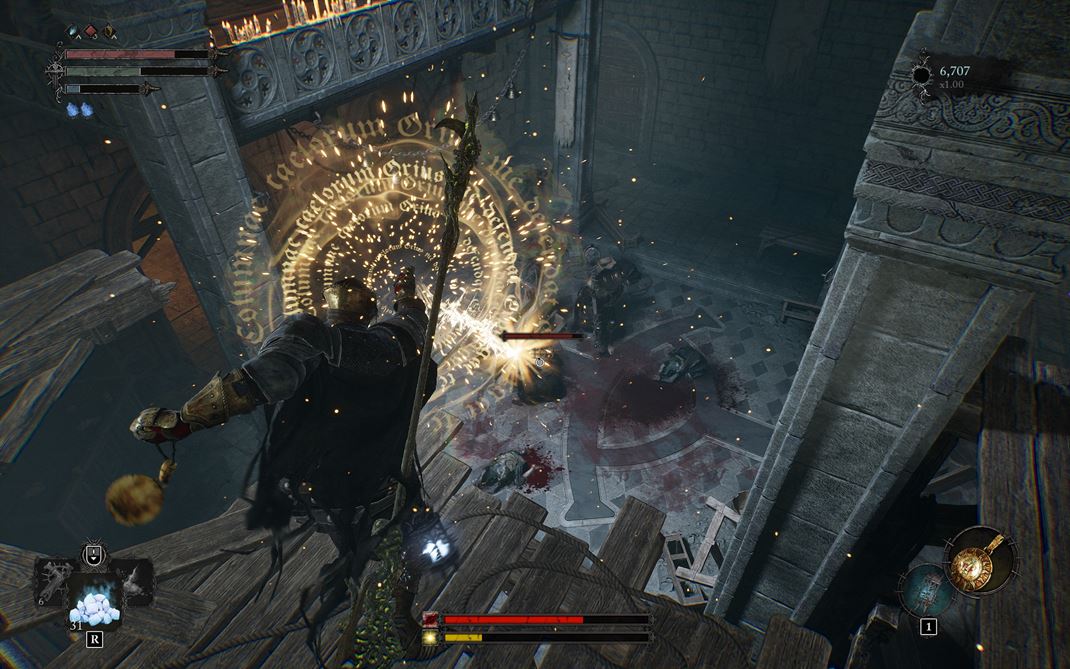
IV. Wrath – When the Judge Decides with a Sword Instead of a Gavel!
The Latin naming of wrath, ira, might be the shortest among its siblings, but in LOTF, the developers' wrath is palpable. As mentioned earlier, the entire experience most closely resembles Dark Souls 3, but it consistently enriches the experience with a dose of frustrating mechanics and roughness that doesn't deter only the most resilient soulslike players. This is also one of the first factors that fractures the community, as the game targets seasoned soulslike players who are already familiar with some developer-inflicted hardships. LOTF is a challenging game only if you've never played a soulslike title before, and the more you progress and the more you refuse to comply with its terms, the sooner you'll lose interest. Difficulty can be easily balanced by upgrading weapons, taking a detour to another location, or using multiplayer/summoning help for boss fights.
Simply put, the combat system is an amalgamation of classics – light and heavy attacks, blocking, parrying, kicking, dodging, and evading are all present. However, an additional layer of complexity is the possibility of wielding any weapon in both hands, charging heavy attacks for instant kills with a stealthy attack from behind, combining attacks into complex combos by chaining them, and more. My fundamental problem with the combat, however, lies in its controls, as the stretched attacks make them much more akin to the hack-and-slash genre, where the protagonist literally throws himself forward with his weapon. The basic walking and running of your character, as well as the attacks of enemies, are similar, and the authors seem to enjoy placing enemies behind boxes, dark corners, or other obstacles in the player's field of view, ideally somewhere near a high platform, pitfalls, and so on. Most deaths in the game for me were caused by falling due to attempting an attack too close to narrow, high-located locations or simply being kicked off a cliff by enemies...
However, the Umbral lamp adds another layer of complexity. For example, it can destroy strange, life-regenerating anchor points of enemies located in Umbral directly from Axiom or suck in strange spherical structures to replenish energy for soul-sucking. Without further unnecessary analysis of this mechanic, I say yes, you can literally suck the soul out of an enemy and leave it temporarily in a staggered state. As a result, you can aggressively damage its soul, causing passive damage represented by a gray health bar. Another hit after the soul merges back with the body can eliminate this damaged health in one blow. But complexity doesn't end here, as each player death is not immediately the end, because upon rediscovery in Umbral, you get a chance to continue once more.
Shortly after rebirth, a group of nearby enemies is thrown back by a shockwave, and half of the player's health is made up of the aforementioned damaged health, which enemies can easily take from you as well. Then your mission is clear. You have to cut through the multitude of constantly appearing monsters in the world of the dead to the nearest Vestige checkpoint or find a totem that transports the protagonist back to Axiom. In addition to the lamp and basic close-range attacks, which you can perform with a wide and varied range of weapons such as an axe, two-handed axe, mace, sword, greatsword, spear, halberd, or even a wooden stick, I won't even mention the unique boss weapons you unlock for their essences. Not to forget a few toys for long-distance combat, such as bows, crossbows, throwing items automatically replenished after each rest at Vestige, and, of course, noticeably strong magic that is a joy to combine with any build.
Weapons are not only distinguished by their specialization and attributes scaled with the attributes of your character but also their design, which is again limited to regions of the game. Speaking of builds and scaling, whose essentiality is well known to any fan of the genre, it must be mentioned that Hexworks doesn't particularly favor strength builds. So, I quickly exchanged the cumbersome movements with my large sword for a more hybrid halberd, unlocked by defeating a particularly frustrating boss. Since the game is relatively forgiving in terms of weapon leveling and overall progress, I quickly recovered from the equipment exchange. My 150-kilogram warrior for innocent souls was constantly clad in quite heavy armor, swung a poisonous halberd, and occasionally cast some bloody spells. And since there is a plethora of adjustments in the game, everyone can undoubtedly tailor their character exactly to their preferences.
V. Lust – If Something Works, Don't Change It!
With the above-mentioned phrase, the developers probably didn't come across, and so the sin named luxuria in Latin appears multiple times in their title. The developers seek inspiration in places where curious soul blades certainly do not belong, resulting in the aforementioned genre confusion. Classic one-on-one souls battles are absent, primarily because the developers love to inundate each location with an extensive number of enemies. In Axiom, you'll be attacked by several furious dog-like creatures, berserkers with two axes, and your death is inevitable due to their number, unnaturally aggressive life-draining, and a lack of health-restoring items. This is followed by rebirth in Umbral, where, of course, a band of your murderers is present, which this time is gradually joined by the local monsters appearing, and, of course, a timer is added, spawning progressively tougher abominations.
Souls games are not built for this type of combat from the ground up, so it's no wonder that in moments of being overwhelmed by hordes of spongy enemies, the game loses its breath, and it all starts to resemble the black sheep of the genre, known as Dark Souls 2. Among elements borrowed from older Souls titles, seemingly endless locations stretched to tens of minutes of cumbersome gameplay without any nearby checkpoints could be included. You'll run quite generously, and Vestiges serving as bonfires are not easy to find. They traditionally represent functions such as teleportation stations, locations for character leveling (which is one of the pluses that, fortunately, didn't follow the example of restricting leveling only at the HUB), and you can also access multiplayer from there. However, one of the negatives is that, when interacting with Vestige, your character doesn't automatically rest, but for the respawn of enemies and replenishing your status, you need to mark the Rest option, which is unusually accompanied by a loading screen for soulslike games...
Moreover, there is another drawback associated with the Vestiges, namely the so-called Vestige Seeds, represented in the game as unborn children's embryos. This fruit is a limited resource that you can place on specific flower-marked locations on the map using the lamp and literally let your own Vestige grow. However, the problem lies in the fact that it is a limited resource, and despite this, you can always have only one Seed placed in the world. In the early stages of the game, locations for placing it are often found in the boss fight arena after finishing the battle, even though there is a full Vestige meter behind the arena. However, if you're playing the game for the first time and don't know the Vestige locations, you can easily miss out on a limited item, and subsequently, you'll miss these seeds in more advanced stages of the game, where there are even fewer checkpoints. Thus, a good idea is relatively effectively ruined by foolish decisions, and all checkpoints become a greater source of frustration. And I haven't even mentioned New Game+, where most Vestiges disappear completely...
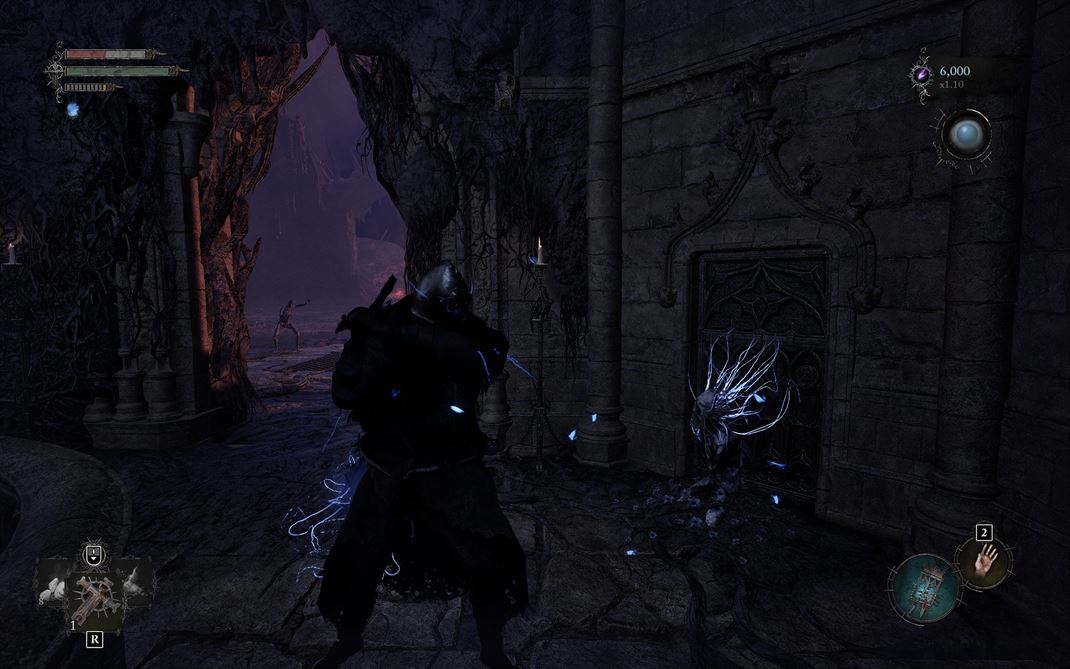
VI. Gluttony – What is Much is Little...
The Latin word "gula" is a very fitting term for the sin of gluttony and overindulgence, and the new LOTF does not avoid it. It is characterized by the aforementioned excessive number of enemies; in fact, there are too many bosses here. The locations are excessively stretched; you literally run not only for everything but also away from everything. The enormous number of weapons causes chaos in the inventory, the overall length is unnecessarily large, and actually, there is just too much of everything... Recently reviewed Lies of P captivated me precisely with its intimacy and poverty in unnecessary elements, thanks to which all its pompous features were executed seemingly less spectacularly but, in the end, much more effectively. On the contrary, LOTF not only doesn't stop, but it doesn't even slow down and throws an excessively large amount of content from various genre branches at you, desperately hoping that something will stick to the players...
I doubt that a certain Slovak viral legend from a TV report ever realized how much truth is actually in her embellished statement - "What is much is little." Sometimes, indeed, too much is less than if only a quality handful of enemies, weapons, or even hours of entertainment had been created. In LOTF, there are more than 30 bosses, not all of whom are the big challenging bastards with multiple phases, story justification, and an entertaining arsenal of attacks. At least half of them are smaller bosses who shortly after the victory become ordinary enemies that the game plans to throw at you regularly for some perverse support of PTSD in players. However, at least before each beacon, there is one more substantial and memorable individual, who, although often a gimmick boss, never becomes boring with his entertainment and unique design.
And whether you are fighting with the marsh knight on horseback, with a giant whose ugly third arm comes out of his mouth, a menacing mythological crow, Sauron from Wish, a bell-ringer at the Mother of God, or another serpent, each boss offers something unique. However, the problem with bosses is noticeable mainly in the first half of the game, when the game throws them at you one after another, and there is not much time to catch your breath. The developers probably realized this as well, so shortly after freeing the first beacon, around the level of playing the first third of the game, there is a turning of the whole concept by a few degrees. The relatively linear locations filled with bosses organically and without a clear format open up to primarily four extensive and stretched paths, and how you decide to proceed will actually be up to you. Don't expect freedom similar to Elden Ring; often the rapidly increasing difficulty will clearly stop you, and you will intuitively either look elsewhere or go straight against the wall.
VII. Sloth – Why Did Blind Faith Hope for More?
Acedia is the last of the seven deadly sins, and its presence disappoints everyone the most. The laziness to create new content and the recycling of bosses, elements, or even the omnipresent identical enemies, animations of attacks for each weapon class, and many other aspects simply stem from the fact that the whole project was supposed to be realized on a smaller scale. Then the need to change a unique boss into an ordinary enemy in the same location would certainly vanish. However, it is sometimes impossible to avoid content recycling, and LOTF certainly masterfully diverts attention from this fact with diverse environments, although often even those cannot escape the player's oversaturation. You will return to several locations as you progress in the game, such as climbing to higher levels of a mountain conquered by a wooden scaffold, and views from the left on a boring rock and from the right on an identical landscape will, unfortunately, become tedious...
An interesting aspect is that over time, the vast majority of locations will be retrospectively connected to your HUB at Skyrest Bridge, and the illusion of a well-interconnected world works perfectly. However, it's a pity that these paths are often unnecessarily long, and your exhausted minds will no longer have the capacity to appreciate this development success. Similarly, it may be considered laziness to postpone the best content of the game to the last third of the gameplay, where LOTF has already managed to discourage most of its players. The authors lost potential fans due to unyielding and clunky mechanics, an archaic approach in several areas of game design, a lack of content variations, and absurd difficulty spikes, mainly associated with hordes of spawned enemies.
Some time has passed since the game was released, and the authors did not hesitate to release updates in response to criticism. Although reinstalling the game every week was truly irritating for me, I cannot complain about the active fixing of errors that should not have been present in the game even at launch. However, the authors still refuse to touch some of the unfinished aspects in updates, and thus, the dysfunctional lock-on system, randomly jumping between enemies and targeting everything except what I am looking at, still exists in a poor state. However, we have at least a roadmap for unpaid content and planned DLC, which is the main thing for a well-selling title, after all.
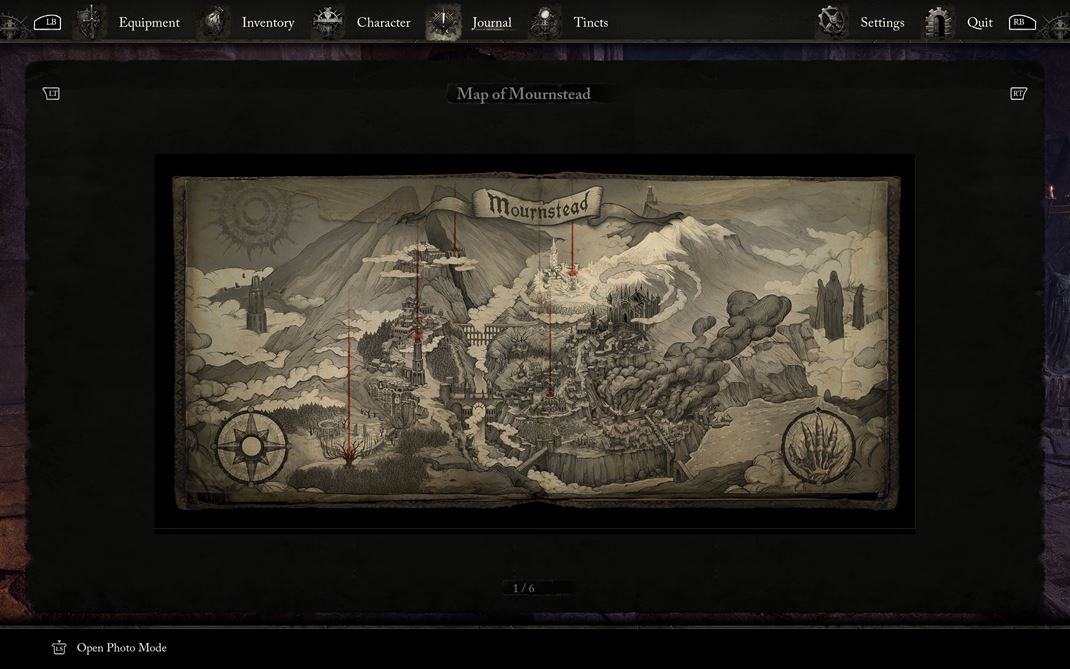
Sinner's Chance for Redemption
Lords of the Fallen could be likened to a properly aged wine, gaining complexity and flavor through years of absorbing the cellar's moisture. Similarly, as you progress through the game, it can deter you with the sour taste of the first half, but the further you go, the more complex level design awaits you, the higher quality bosses with not only an interesting story but also unique mechanics, the more diverse and visually impressive environments you'll see, and most importantly, you'll have noticeably more fun with the seasoned character. You'll appreciate the initially subtle tones of complexity, such as moths/butterflies indicating interaction with Umbral, several interesting NPC characters with intricate storylines, which you often capture only through environmental storytelling, or the gradually changing Skyrest Bridge HUB.
The more time I spent with the lords, the more I immersed myself in the experience, despite the significant number of errors, shortcomings, unfinished mechanics, and a wide selection of sins that undoubtedly discouraged many players. I actively listen to the fantastic soundtrack even when not playing the game, I still admire the images due to the fantastic visuals, and the atmosphere created not only by visuals but also by fantastic sound design is outstanding. The new Lords of the Fallen is not the grandiose return of the prodigal son that epic trailers and promising previews showed us, but it is an experienced successor critically aware of the mistakes of its predecessor. Hexworks attempted to present us with a heap of their own ideas, and although they often stumble, there is an inexplicable charm to this sinner that compels me to give it a chance to show what comes next…


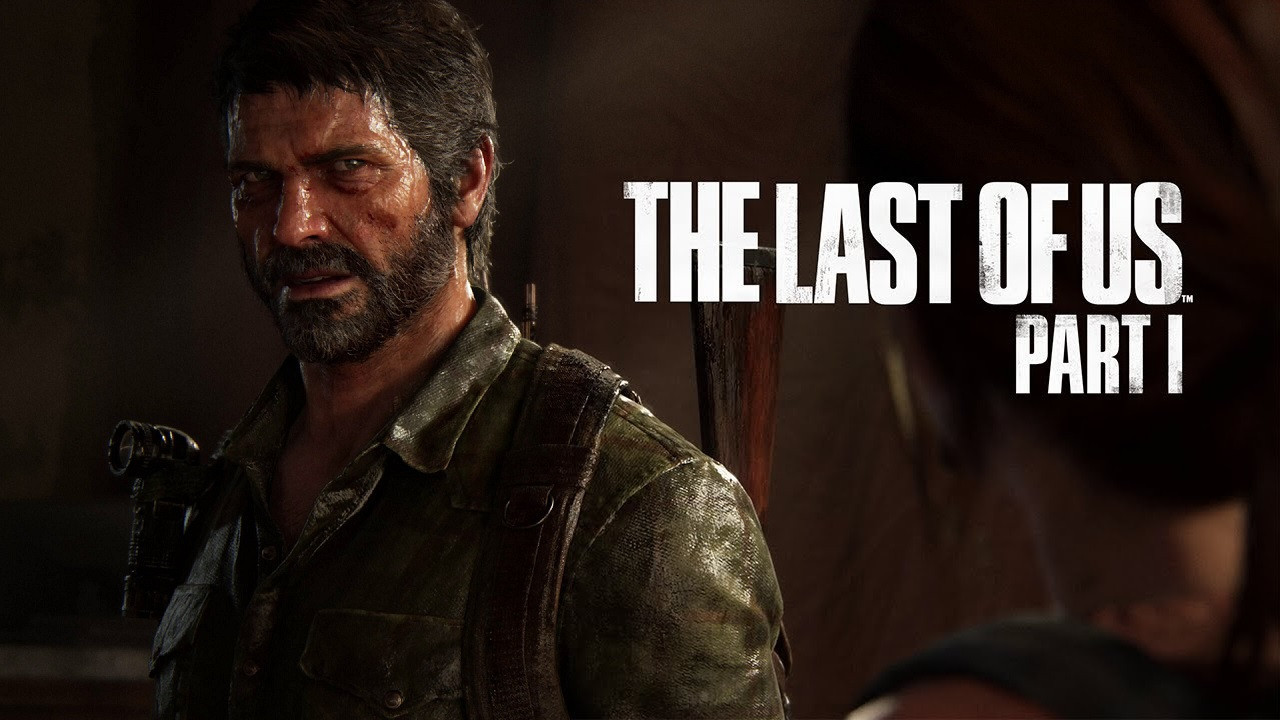



Comments (0)
No comments found